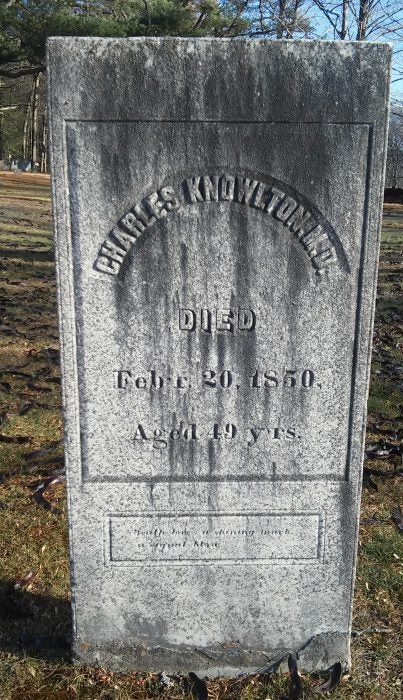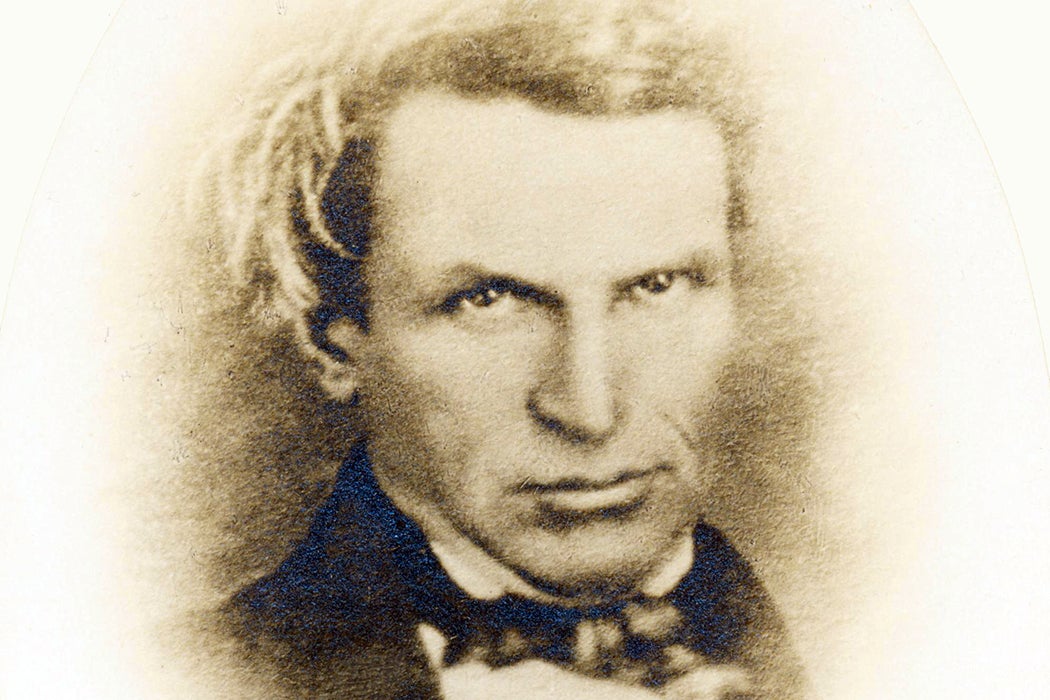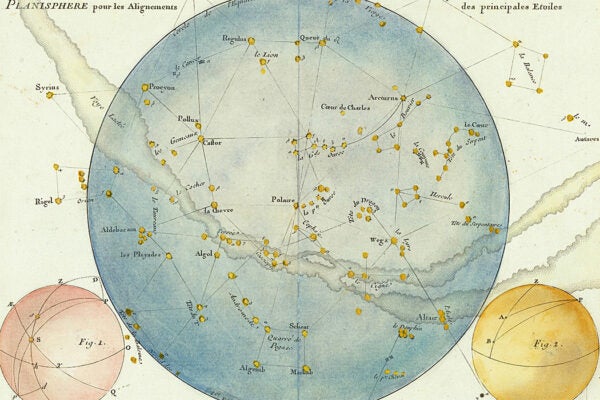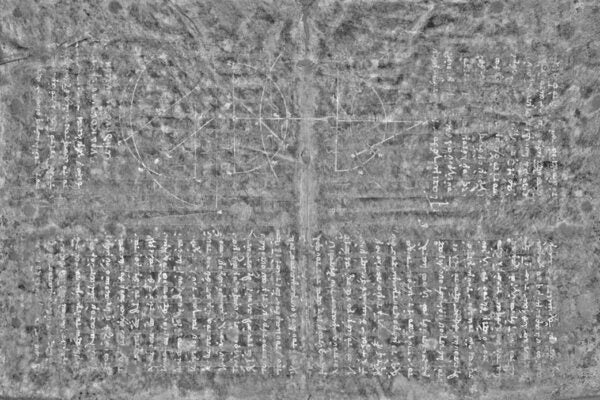In January of 1832, a 64-page book entitled Fruits of Philosophy, or the private companion of young married people, was published in New York. Credited to “a physician” and only 3 inches by 2 ½ inches, it would become of the most important American birth-control books of its era. The epigraph on the title page was, “Knowledge is wealth. – Old saying.” The book’s author, a country doctor from Western Massachusetts, was the first person to be imprisoned for birth-control writing on any continent. Decades after he died, his book would be credited with the reversal of population growth in England and the popularization of contraception in the United States. His name was Charles Knowlton.
When he published Fruits of Philosophy the nation was experiencing a boom in contraceptive literature. Before that decade, reproductive information had been disseminated via pamphlets of questionable medical value, verbal gossip, and doctors who often gave misinformation. By the 1830s, Malthusian theory—the idea that population would outstrip food supply—was growing popular in England and the U.S. In that decade, some books posited the radical idea that sex and reproduction could be separated. English reformer Richard Carlile’s Every Woman’s Book (1826) gave instruction on partial withdrawal, vaginal sponges, and condoms. Socialist and labor activist Robert Dale Owen’s Moral Physiology (about 1830), recommended the same methods, eventually selling about 50,000 copies in the US and England. The book was overtly political; Owen wrote that single women and women with genetic diseases should not have children.
Knowlton read and was inspired by Moral Physiology. He knew Owen personally, through physician and freethinker circles. Among his own patients, Knowlton had witnessed impoverishment, stress, and health problems caused by frequent unplanned pregnancies and childbirths. Fruits, he said, was inspired by his “feelings of humanity—feelings that none but a physician could experience; for none but a physician could have a full idea of the miseries it is designed and well calculated to alleviate or prevent.”
The Book
Fruits, drafted in the summer of 1831, began with a provocative chapter called Philosophical Proem which stated that sexual desire was not inherently evil. “When an individual gratifies any of his instincts in a temperate degree, he…causes the amount of human happiness to exceed the amount of misery.
In Chapter II, “On Generation,” Knowlton argued that birth control, which he called “checks” on conception, would prevent overpopulation, decrease poverty and crime, reduce illegitimacy, and encourage early marriage—as couples would be less anxious about accidental pregnancy.
An entire chapter detailed the female reproductive system, using the terms “vagina,” “Mons veneris,” and “labia externa.” He wrote: “The clitoris is analogous in its structure to the penis, and like it, is exquisitely sensible, being, as it is supposed, the principal seat of pleasure.” It was the first detailed writing on the female reproductive system ever published in the United States. (He did not add a section on male anatomy until his fourth edition, perhaps because he was targeting male readers who knew little about women’s bodies.)

The most important chapter was “On Promoting and Checking Conception.” After a brief roundup on the methods recommended by other writers, he detailed a fourth that was cheap and safe: spermicidal douches following sex. He recommended that women douche, or syringe, with “sulphate of zinc, of alum, pearls [potassium sulfate], or any salt that acts chemically on the semen…” Some of the substances he recommended did have a contraceptive effect by making the vagina less hospitable to sperm or by constricting the cervical opening, but they were painful and even dangerous after repeated use, causing vaginal irritation.
Browse an 1878-1880 edition of Fruits of Philosophy here.
He liked the syringe, because it “costs nearly nothing; it is sure; it requires no sacrifice of pleasure; it is in the hands of the female; it is to be used after, instead of before connexion, a weighty consideration in its favour…”
Despite his desire to help young couples, Knowlton worked hard to keep the book out of the wrong hands. He set the price at fifty cents a copy (about $14 today) and kept his stock in a hidden box in his office, though one summer eleven copies mysteriously went missing.
The Man
So how did this country doctor come to revolutionize birth control in the United States?
One thing is clear; Knowlton came from humble beginnings. “I have been informed, but whether correctly or not, I can never know—however confidently I may believe—that I, Charles Knowlton, was born in Templeton, Worcester Co., Mass, on the 10th of May, 1800,” he wrote in his autobiography. His father was a farmer of modest means, and Charles was the middle of three sons.
At seventeen he was five-eleven, 135 pounds, and deeply troubled. He suffered from a condition then called gonorrhea dormientium: frequent nocturnal emissions. Masturbation and wet dreams were so taboo they were associated with back pain, poor digestion, and insanity. Due to anxiety about his emissions and masturbation, he developed what he described as “wan countenance, debility, nervousness, gloom and despondency.” He took bark, iron, and opium to no effect, and became a hypochondriac. After he discovered that exercise made him feel worse, he wrote “TAKE CARE” on a piece of paper and fastened it to his coat sleeve cuff.
His masturbation-related hypochondria led to an interest in medicine—making him one of many men whose accomplishments can be credited in part to their onanism. As a teen, he apprenticed with a physician, but by twenty, he was living with his parents, bored and sick. Though he was constantly ill, he recalled later that he “had a sort of presentiment, all the time, that I should get well, and yet make my way in the world, but I had no sort of conception how this would be.”
He got a better idea in January 1821, when Richard Stuart, a mechanic and friend of the family, came to visit and suggested that Knowlton take electrical treatments. Desperate for relief, he wrapped himself in buffalo skin and moved into Stuart’s home a few miles away. Whether or not the electrical treatments worked, the change of scene proved curative. Stuart had six daughters who liked to play chess and music and Knowlton became fond of Tabitha, a former schoolmate. “There was the company of the girls, also, and then that electerizing business, it was to me a great and strange novelty,” Knowlton wrote. “It put the ‘vital fluid’ into me…” Soon he had stopped taking medication altogether. Tabitha and Charles were married that April, when she was 17 and he was 20.
In 1822 he entered Hanover Medical College (now Dartmouth College). After he heard a rumor that the school would pay $50 for a cadaver he robbed two graves on the way to New Hampshire. Only one corpse made it, but his anatomy professor informed him that he could not use it due to the warm weather and gave him $20 to get rid of it. Knowlton was later tried for grave-robbing and disposing of a body, convicted of illegal dissection, and given two months in the county jail.
He received his medical degree in 1823, writing his dissertation on the importance of dissection to the study of anatomy. He and Tabitha moved to Hawley, Massachusetts, to try to build a practice, but patients were scarce and they were often in debt. In 1824 they had their first child, Charles, and by 1828 they had three. (Knowlton apparently started to follow his own contraceptive advice; their fourth child, Augusta, was born in November 1831, but their son Willis was not born until May 1837, an interval of nearly six years.)
Around 1831, the couple settled in Ashfield, a bucolic town in Western Massachusetts, and he went into practice with a local doctor there named Roswell Shepard. Knowlton wrote that Ashfield “contains about 1800 temperate, industrious, and for the most part, enterprising inhabitants—besides a good many sheep.”
He was a bit of an oddball in the small town. On Sunday mornings, he would play his violin instead of joining the others at church. Children were told that he had horns. But Knowlton was respected as a doctor, known for his skill at delivering babies. He visited patients throughout 700-square mile Franklin County. The only remnant of his childhood ills was his angina; on his carriage rides he would stop on the side of the road, get out, and lie down until he felt better.
The Trials
The reaction to Fruits in the medical community was, unsurprisingly, given its incendiary information, rather negative. “[T]he less that is known about it by the public at large,” declared the Boston Medical Journal, “the better it will be for the morals of the community.” Despite this, the first edition sold around 2500 copies in a little over a year—a success given the lack of advertising.
In 1832, Abner Kneeland, publisher of the Free Thought (secularist and free speech) journal The Boston Investigator, printed a second edition of Fruits, which increased its popularity. But the increased attention to the book was not all positive. A case was brought against Knowlton in Taunton (a larger city about 135 miles from Ashfield) for “libel against the public morals,” or obscenity. The case summary stated that he sought “to debauch and corrupt, and to raise, excite and create in [citizens’] minds inordinate and lustful desires,” and called Fruits “a certain lewd, scandalous and obscene little printed book.” At issue were the descriptions of female genitalia and the effects of coitus, and the contraceptive advice.
Tried before a jury of strangers, Knowlton defended himself. Only excerpts of the book were introduced as evidence. “The jury were doubtless very clever, honest men,” Knowlton recalled, “but the subject was entirely new to them; and it was probably much easier for them to imagine mischief from the work, than to form a full idea of its utility.” The jury found him guilty and he was fined $50 and court costs of $27.79. The prosecutor felt so guilty that he turned over his fee to Knowlton. One of the jury men confided in Knowlton, “I like your book and you must let me have one of them.”
Before the conclusion of the first trial, a physician in Lowell, perhaps competitive with Knowlton, brought new charges. Knowlton’s lawyer told him to plead guilty of selling the book, and said he would likely be acquitted of the obscenity charge. Knowlton took his advice, was found guilty of obscenity, and sentenced to three months’ hard labor in the East Cambridge jail, despite his angina.
The imprisonment drew outrage in the Investigator and in Free Thought circles. The “friends of the liberty of the press” of Pittsburgh called his imprisonment “disgraceful to the bench of justice—to our republican institutions, and to the age in which we live.”
In the spring of 1833, a new pastor was installed at the Presbyterian church in Ashfield, Mason Grosvenor. Grosvenor began preaching against Knowlton, calling him an infidel, and in the summer of 1834 persuaded a grand jury to indict both Knowlton and his business partner Shepard. The physicians were tried in Greenfield. The jury deliberated for seventeen hours but could not reach a verdict. The doctors were freed.
The Legacy
Despite the headaches Fruits caused, Knowlton felt an author’s pride in his intellectual property, claiming that he had invented spermicidal douching (which in fact dates to the Greeks). When a preacher published a book a few years after Fruits and mentioned the technique, Knowlton called it “a violation of my copy[right], as it not only contains most of the ideas of F.P. but that peculiar information which I was the first to publish.”
In Ashfield he remained well-liked by his patients, but Reverend Grosvenor was a thorn in his side. In the spring of 1835 the preacher called a town meeting, waved Fruits in his hand, and claimed that it would give rise to “infidelity and licentiousness in this place.” Grosvenor said it was his duty to “crush” Knowlton and asked the townspeople’s help. The preacher moved away a year later after fifty parishioners defected. Knowlton crowed in the Boston Investigator, “He left because the meeting house is too large for his voice!!!”
Knowlton remained a practicing doctor until his death. He was plagued by heart problems and personal travails; two of his five children died as young adults. Late in his forty-ninth year, after feeling dyspeptic, he took a trip to Templeton, where he visited his father, brother, and sister-in-law. After he went to bed his sister-in-law heard a thump and found him rolled over on his face, dead, most likely of angina.
Nearly thirty years later, in 1877, Fruits became a sensation again. English reformers Annie Besant and Charles Bradlaugh were seeking a test case to overturn a new obscenity law and republished it. They got off on a technicality. The trial drew so much publicity that about 250,000 copies were sold in England over the next three years. By the late 1890s a dozen editions were published in the U.S.

Contraceptive historians have credited the book, and the Besant-Bradlaugh trial, with causing a decline in the English birth rate and the popularization of the idea that couples could—and should—practice family planning. The birth control movement in the U.S. took off in the 1870s, after the passage of the Comstock Law, which criminalized the mailing of contraception with severe sentences and fines. Many American birth control providers were jailed or fined for selling syringes, and Anthony Comstock, special agent to the U.S. Post Office, often pursued progressive doctors in court for contraceptive articles and pamphlets.
Knowlton spent his life proud of his work as a physician and defensive that he was not better appreciated. He was said to have had these words printed on the medicine bag he toted to his patient visits: “God and the doctor alike we adore,/Just on the brink of danger, not before,/The danger past, both alike acquitted,/God is forgotten, the doctor slighted.”







